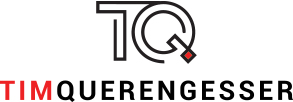I bike and walk before I take a taxi or drive my partner's car, and I don't have the Uber app on my smartphone. But I'm more than willing to consider the recently floated — and instantly controversial — idea of privatizing transit services at the fringes of our network.
Before I explain why, I think it's important that we consider what's happening elsewhere and what the proposal for Edmonton, from transit theorist and consultant Jarrett Walker, really boils down to. In a phrase, we're seeing Edmonton contemplate joining the global emergence of mobility-as-a-service, or MaaS.
Private mini-bus beside public bus, Hong Kong. Photo: Flickr/Yuksing
Let's back up a bit. The two biggest problems for transit planners are the first mile and the last mile — or in human terms, the bit where you get from your house, condo or apartment and into a bus or an LRT train, or the opposite when you return home or alight and go to your office or destination. Some parts of Edmonton, like for instance my house near 124 Street, make this laughably easy. But many parts of the city, like the areas where Edmonton Transit data shows bus ridership not justifying continued service, and where city data also shows many riders often call taxis or Ubers, or using Pogo cars once they leave transit, most certainly do not.
Mobility-as-a-service is an idea that's emerging — thanks to a proliferation of new mobility options, many of them ostensibly "private" but nonetheless often subsidized with public money (think bike shares) or other incentives — to weave these services together and see you, the user, pay one fee or use one app.
In short, to make mobility simple and move you from the whole way, not only part of it.
Screenshot of Maas app.
Consider how I have used car shares in Edmonton, Vancouver and Toronto as feeders to public transit as an example. Indeed, when I lived in Toronto's Beaches, literally on Lake Ontario, the closest LRT was more than 10 long blocks north, on Danforth Avenue. My options were a bus that ran north every 30-45 minutes and took 45 minutes to get me to the subway, which then took another 45 minutes to get me downtown. Total travel time: 90 minutes.
My other option was the Car2Go lot one block away. If I took a Car2Go I could drive to Danforth for about $2.50 and then take the subway downtown. My trip would be nearly 40 minutes shorter. So, for an extra fee of $2.50, and without knowing the buzz word, I had used mobility-as-a-service to solve my first-mile problem.
This is the scenario Edmonton planners, as well as Walker, see working to increase transit user numbers in far flung communities. There, in a huge failure, Edmonton has built little trunk-line type public transit infrastructure. So in the hypothetical future, as parking becomes ever more dear downtown and roads become ever more clogged, more and more people will be willing to spend money to move themselves to the nearest long-haul (in city terms) bus or LRT station to commute to and from work.
If the dreamers are correct, you may even be able to pay one monthly fee to do this — allowing you to use a Pogo, then an LRT, then a taxi, then a TappCar, then a (still non-existent) bike share to get where you need to go. This already happens in Finland.
Okay, but: Any creep toward privatization should always raise questions, and damn tough ones — and especially when Uber is involved. But we would also be wise to consider the other side of the privatization argument as well, and to consider why many cities around the world have arrived at the same conclusion.
Indeed, Atlanta, Dallas and Los Angeles have all built service agreements with private mobility companies for this reason. And my travels to Hong Kong and Nairobi both showed me the utter brilliance of small-scale, private mobility options that feed the expensive, difficult to build and yet essential trunk-line public transit routes. Hong Kong is a city of LRT, and yet without its constantly roaming army of minivans, which drivers use to ferry you from LRT stations to your neighbourhood, the whole system would not work.
All I'm advocating for is an informed debate, rather than the pro- and anti- free-market voices dominating the discourse.
A good take on why we should say no to this idea is here. A good take on why we might want to consider it is here. After that, over to you, Edmonton.



